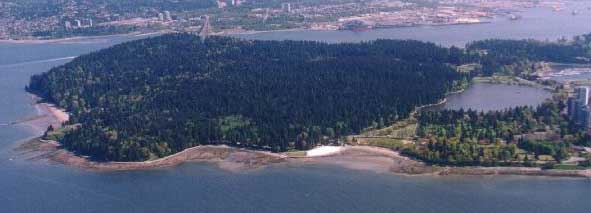
Stanley Park
Stanley Park remains today, as it did 100 years ago, "Vancouver's Playground." Boasting a total area of 1,000 acres, sandy beaches, giant fir and cedar trees, swimming pools, lakes and stunning vistas from every side, the natural beauty of the area has been preserved and the Park remains as the single biggest draw for visitors and locals alike.

Vancouver's landmark park, named after Lord Stanley of Preston, the Governor General of Canada in the late nineteenth century, boasts a history as long as Vancouver itself. Originally used as a military installation for the British to defend against impending American attack, it quickly became a protected area as the city of Vancouver was becoming forged as a frontier community.
In 1887, merely a year after Vancouver become incorporated as a city, the lands were leased for the purpose of establishing the Park, and Canada's largest civil-funded park was born.
That year, a community soon-to-be the West End - located directly adjacent to Stanley Park - was stirring up interest with elite buyers keen to be a part of this newly-opened area. With this steady influx of residents came a desire to develop and utilise the Park to its full potential. It quickly became the favorite location for many activities, not least bicycle racing, which was exceedingly popular through the 1890's. This was what Brockton Oval, on the eastern peninsula, was originally built for.
By 1913, the Park had become an important tourist destination, drawing some 50,000 visitors on foot per week (the Park was still free of automobiles until the next year). By 1918, the famous 'seawall' began construction - now an enormously popular trail that circumnavigates the entire park (8.8 km) - however was not completed until 1980.
Today, the Park is a integral part of the lives of many Vancouverites, and further establishes the city as one of the premier cities to reside and visit in the world.
|
|
Published on: 2004-08-05 (12682 reads)
Recent Reviews
- War Horse 2012-01-02
- Legion 2010-01-23
- Zombieland 2009-10-02
- The Martyr's Oath: The Apprenticeship of a Homegrown Terrorist 2009-08-20
- Bachman Cummings 2009-06-22
- Star Trek 2009-05-03
- X-Me Origins: Wolverine 2009-05-01
- Soloist 2009-04-24


